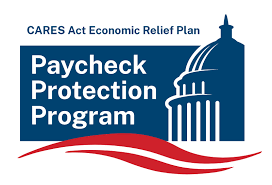
As you probably know, the Coronavirus Aid, Relief, and Economic Security Act (CARES) was signed on March 27, 2020. The $2 trillion package includes $349 billion for a loan program called the Paycheck Protection Program (PPP). This is an unprecedented program both in scale and in speed of implementation. Because it is happening so fast, many of the details are still being worked out by the Small Business Administration and the banks that will be processing the loan applications. Here is what I know:
- The PPP is designed to cover short term payroll and related costs for small business owners who are still operating, including sole proprietors,independent contractors and non-profits. The intent is to allow businesses to keep their existing employees on the payroll, even though business may be in a downturn. (If you have closed your business and laid off your employees they will be covered under state unemployment as well as a federal contribution of $600 per week. More on this later…)
- You will be eligible for a loan of 2.5 times your average monthly payroll costs.
- Payroll costs include wages, state and local payroll tax (e.g. UI paid to Employment Security, PFML, and Labor & Industries), health insurance and retirement benefits (capped at $100,000 per employee). Federal taxes are excluded. Payments to 1099 contractors are excluded.
- Loans will be processed by participating banks and funded by the SBA (unlike the Economic Injury Disaster loans, which are processed and funded by the SBA).
- Small businesses and sole proprietors can apply for loans starting April 3. Independent contractors and self-employed individuals can apply starting April 10.
(And no, the distinction between sole proprietors, independent contractors, and self-employed individuals is not at all clear. This is one of the areas that we are waiting for the SBA to clarify, but if you file taxes as a sole proprietor you should file as early as possible.)
- The funds must be used within 8 weeks after receipt, and must be used to pay payroll, business rent or mortgage interest. Of the total, at least 75% must be used for payroll costs.
- These loans will be made without a personal guarantee, without a credit check, without demonstrating the ability to repay. As noted, this is unprecedented. And here comes the kicker:
- These loans will be FORGIVEN if headcount and payroll costs are maintained! In other words, this is FREE MONEY to help you pay your employees without having to lay anyone off. (If you do reduce your payroll, the amount forgiven will be prorated and you will have to re-pay part of the loan).
It’s probably clear by now that there are many details to work out (defining your average payroll costs, for example). But if you want to apply for this loan you should check out your bank’s website right away and find out if they are accepting applications. Then you should gather the information requested, which varies by bank. For instance, Chase Bank is recommending that you have the following information available:
- The date you started your business
- Your annual revenue
- Your business mailing address
- Detailed information in order to calculate the monthly average payroll costs for your employees for the past 12 months.
Here is how to calculate the average payroll (from SBA.gov):
For purposes of calculating “Average Monthly Payroll”, most Applicants will use the average monthly payroll for 2019, excluding costs over $100,000 on an annualized basis for each employee. For seasonal businesses, the Applicant may elect to instead use average monthly payroll for the time period between February 15, 2019 and June 30, 2019, excluding costs over $100,000 on an annualized basis for each employee. For new businesses, average monthly payroll may be calculated using the time period from January 1, 2020 to February 29, 2020, excluding costs over $100,000 on an annualized basis for each employee.
The bottom line is that the intent of the PPP is to keep America working, so I suspect they may fund whatever you ask for on the front end, but may ultimately determine that you did not spend all the money on the allowable expenses (payroll, rent, mortgage interest, utilities). If they disallow any part of the expenditures, they will not forgive that portion of the loan.
Some banks may also request copies of state and federal payroll returns for all of 2019 (Forms 941, 940, Employment Security.) You might want to log in to your payroll provider’s system and download those, or print them if you run your own payroll through QuickBooks. Gusto has done a great job creating a report that you can generate and use as the basis for your loan request.
As you can imagine, I am swamped with figuring out the details of this program and the others that are part of CARES and the Families First Act. The more self-sufficient you can be in gathering your documentation, the faster you will be able to get your application filled out and be in the queue. Of course, if you do need help, please don’t hesitate to contact me. I am here to help you get through this insane time.
Wishing you and your loved ones health!